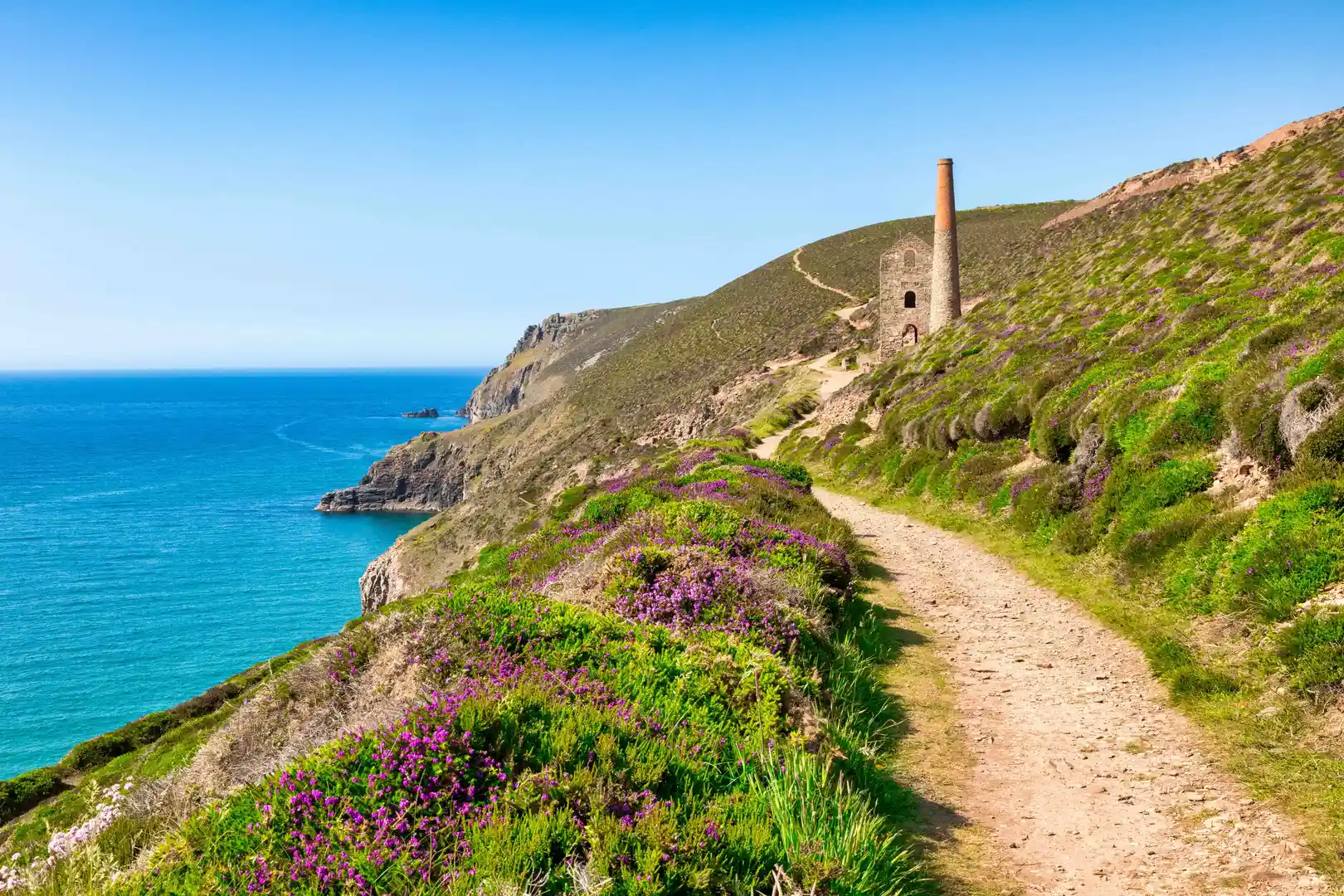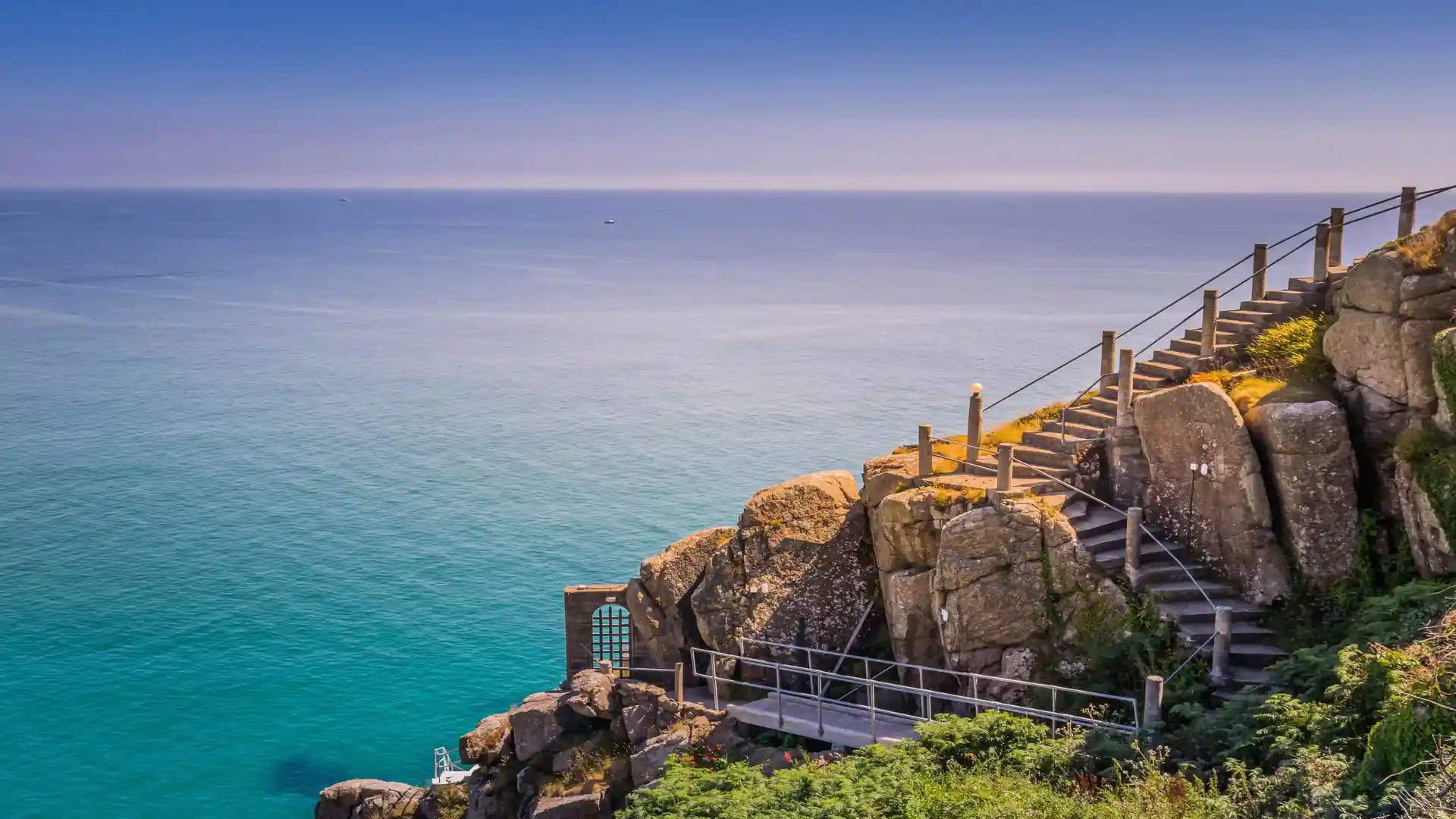

Cornwall, at the far south-western tip of England, is one of the country’s most celebrated destinations for walking holidays and outdoor adventures. Part of the South West England region, it is shaped by the Atlantic, steeped in legend, and blessed with dramatic coastal scenery.
The South West Coast Path (Cornwall Section) hugs the coastline for nearly 300 miles, weaving around headlands, sea stacks, and fishing harbours. Inland, walkers can follow the ancient Saints’ Way between Padstow and Fowey, explore the riverside Camel Trail, or climb to Bronze Age landmarks on Bodmin Moor. Cornwall is also home to protected landscapes, including the Cornwall National Landscape and the Tamar Valley National Landscape, offering rich wildlife and heritage.
From clifftop hikes at Land’s End to estuary strolls and harbour walks, Cornwall is a county where every footstep tells a story.
South West Coast Path (Cornwall Section)
A roughly 300-mile stretch of England’s longest National Trail, following Cornwall’s coastline from Marsland Mouth near Bude to Plymouth via Land’s End and Lizard Point. Expect rugged cliffs, hidden coves, and endless sea views.
Saints’ Way
A 27-mile inland route from Padstow to Fowey, believed to follow an early Christian pilgrim path. It passes farmland, ancient churches, and tranquil river valleys.
Camel Trail
A flat, multi-use route along a former railway between Padstow, Wadebridge, and Bodmin. Popular with walkers and cyclists, it offers easy estuary and woodland scenery.
Bodmin Moor Trails
Climb Cornwall’s highest points — Brown Willy and Rough Tor — and discover Bronze Age remains across this wild granite upland.
One of the county’s best-known destinations is St Ives, famous for its golden beaches, art galleries, and position on the South West Coast Path. It’s a perfect base for walking holidays, with clifftop paths, cultural attractions, and easy links to the rest of Cornwall.
